When looking for a portable heater, there are a few options to choose from. As you're searching, you might have narrowed your choices down to a ceramic heater and a fan heater.
What are the differences between the two? And, more importantly, which one should you choose? We did the research to provide an insightful comparison between the two.
The differences between the two come down to how they heat up. As its name implies, a ceramic heater uses ceramic plates to heat the air.
Ceramic heaters can operate with or without a fan. On the other hand, fan heaters work by heating metal coils. It transfers the heat through a fan.
There's a lot more to the comparisons than how they operate. Which one heats faster? Is there any danger to using one over the other? These are some aspects you want to consider before making a decision. If you'd like to learn more, keep reading ahead.

Getting To Know the Differences
Of course, before making a choice, it's always best to put the two items you're having difficulty choosing head to head. One might be better than the other, but that won't matter if it doesn't fit our situation.
Without further ado, let's take a look at ceramic heaters first!
Ceramic Heaters
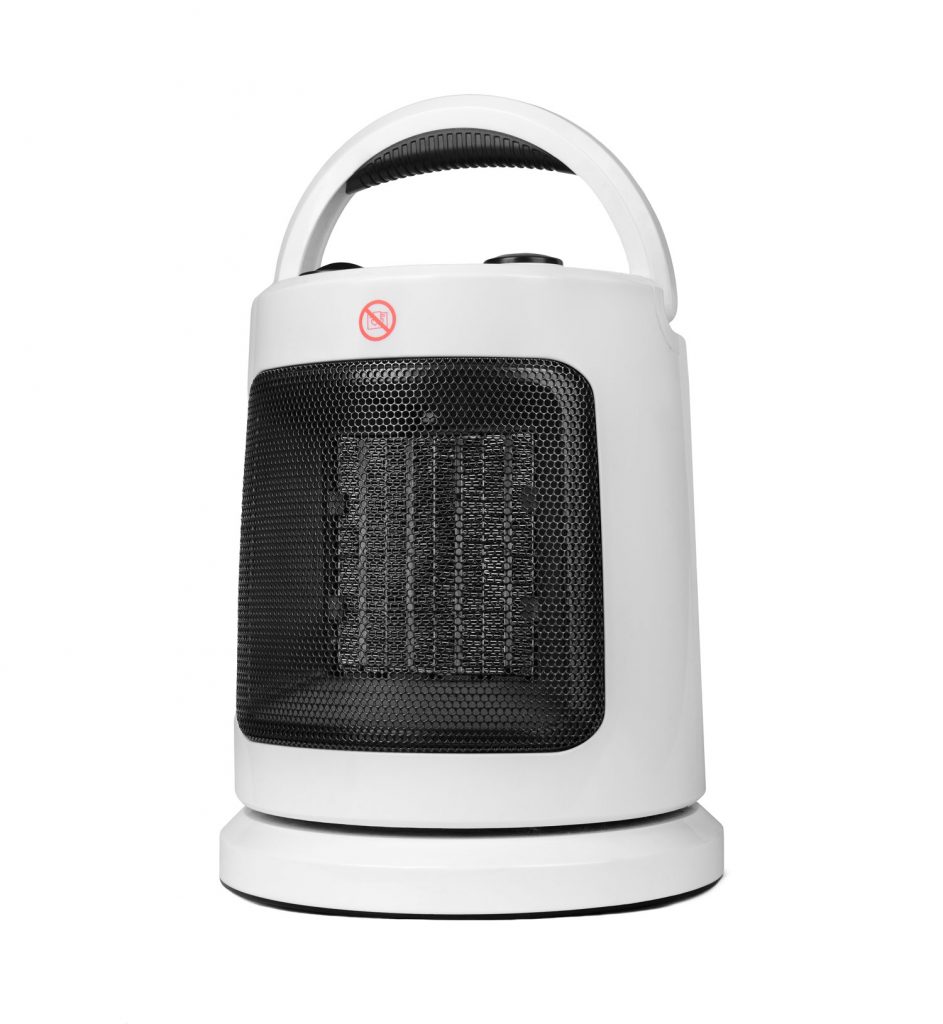
If you've never seen a ceramic heater in person, they're not like its name implies. More specifically, the heater isn't ceramic entirely. They will usually feature a plastic housing with some metal coils inside.
What differentiates them from other types of heaters is the way it works. It uses the principle of resistive heating. In other words, the heater will pass an electric current through a conductor to produce heat.
The conductive material, in this case, is ceramic plates. What makes them effective is that they offer resistance to the current. So, as the current struggles to pass through it, it will produce more heat.
A Simple Step-by-Step of How It Heats
The way it heats the area will depend on the type you purchase. As mentioned, ceramic heaters can operate with or without a fan.
Ceramic heaters that use a fan are the most common type you'll run into. Many refer to them as convective ceramic heaters.
The variation that doesn't use fans is a radiant ceramic heater. Regardless, the way they produce the heat is the same.
It starts by having electricity heat metals parts—usually aluminum fins. The heat from the fins will transfer to the ceramic plates. As this is happening, the heater will also draw in cool air.
It pushes the cool air over the ceramic, heating the air and spreading it throughout the room in the process.
Radiant ceramic heaters work slightly differently. Instead of blowing out hot air, it radiates heat to objects in its path. In terms of efficiency, it's not the best if you want to heat a room.
Benefits of a Ceramic Heater
The benefit of using a ceramic heater over the others is its simplicity. All you need to do is adjust the thermostat and let the heater do its work. It heats more quickly than other types of portable heaters.
However, the main concern with portable heaters is safety. Some of them can overheat. In the worst case, it can start a fire without you noticing.
In general, ceramic heaters shouldn't have that problem because most have safety features. Some manufacturers, like Lasko, make ceramic heaters that have self-regulating elements that cut off wattage in the event of an air blockage.
Other safety features include a tip-over safety switch, overheating protection, and cool-touch housing. As the name implies, a tip-over safety switch shuts off the power when someone knocks it over.
The overheating protection feature shuts the unit off once the internal components reach extreme temperatures. Cool-touch housing is an overheating-prevention feature. The heat coming from the heater won't affect the outer body. You should be able to touch the heater even after hours of use.
Fan Heater
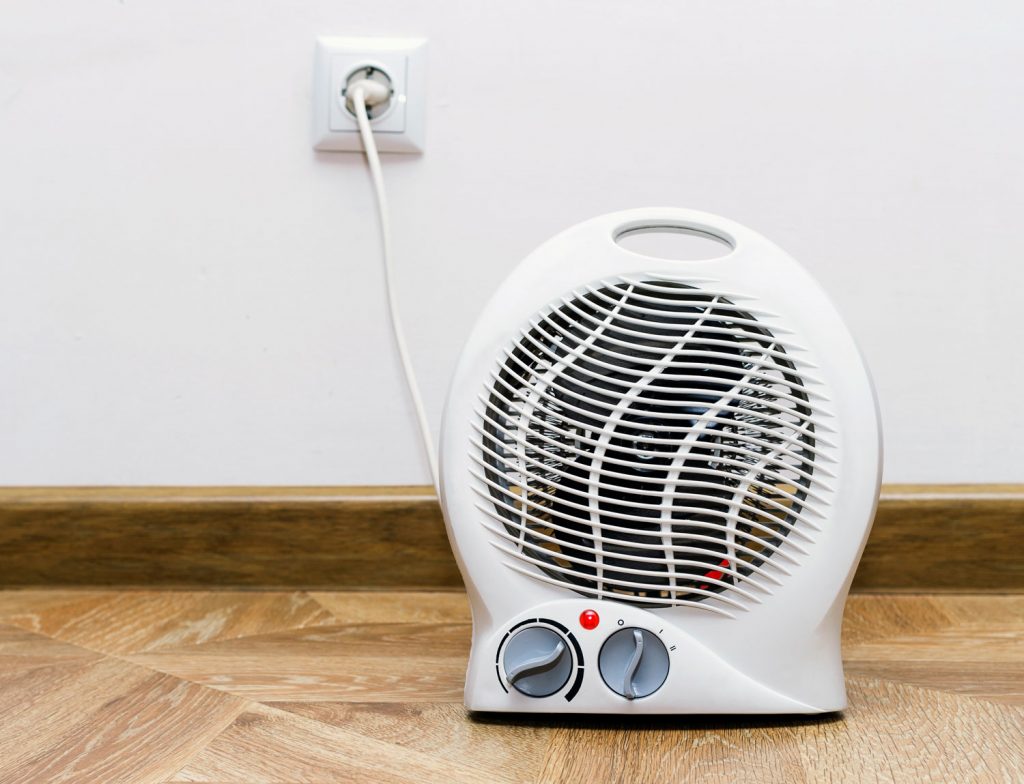
If you thought ceramic heaters function relatively simply, let's hear about your standard fan heater! It works on the same principles as a ceramic heater. More specifically, electricity will heat metal coils to produce heat.
That's it! The metal coils will produce heat. Then, a fan will blow the heat all over the room. It's that simple.
Benefits of a Fan Heater
The main advantage of using a standard fan heater is affordability, simplicity, and convenience. It heats up slower than a ceramic heater, but it can still heat large spaces efficiently.
Regarding safety features, you'd have to look for them when you're purchasing one. Its simplicity does come with a downside. Sometimes, they're too simple. So, the only things they can do are power up and heat.
Like most products, if you want to ensure your safety, you need to look for certifications. It's the same thought process with fan heaters.
As some suggest, when you're looking to purchase a fan heater, make sure they're certified with one of these labels:
- Underwriters Laboratory (UL)
- Intertek (ETL)
- Canadian Standards Association (CSA)
Which One Should You Choose?
There are minimal differences between a standard fan heater and a ceramic heater. In fact, most ceramic heaters would fall into the category of a fan heater. The reason is that it uses a fan to disperse the heat around the room.
The only difference between the two would be how they produce heat. However, standard fan heaters seem to be less safe than ceramic. Ceramic heaters will usually have tons of safety features. They're the more modern choice.
If you value simplicity, a standard fan heater will suit you better. There isn't much of a learning curve to using one. However, that doesn't mean you'd have trouble using a ceramic heater. It all depends on your budget.
Although ceramic heaters tend to have more safety features, it's important to note that you should always practice safe use. That is regardless of the choice you make between ceramic and fan heaters.
Practicing Safe Use
Let's go over some safety tips for using an electric heater. The first would be to keep it away from flammable materials. So, keep the exhaust away from items like blankets, clothing, rugs, beds, and upholstered furniture.
The second safety tip would be to use it on a grounded outlet. Heaters, regardless of which you choose, use a lot of electricity. Items like extension cords aren't able to handle the load heaters need.
Finally, make sure your smoke alarms are working. It can happen to the best of us. In some cases, someone can forget to turn off the heater. So, it might overheat and start a fire. Thus, it's essential to have an operational smoke alarm.
Do Ceramic Heaters Use a Lot of Electricity?
If you're worried about energy efficiency, it would be best to look at the specifications of the ceramic heater you plan to purchase. It will tell you everything you need to know about electricity usage.
In general, it seems that most ceramic heaters will use around 1 to 2 kilowatts an hour.
Is a Fan Heater Bad for Health?
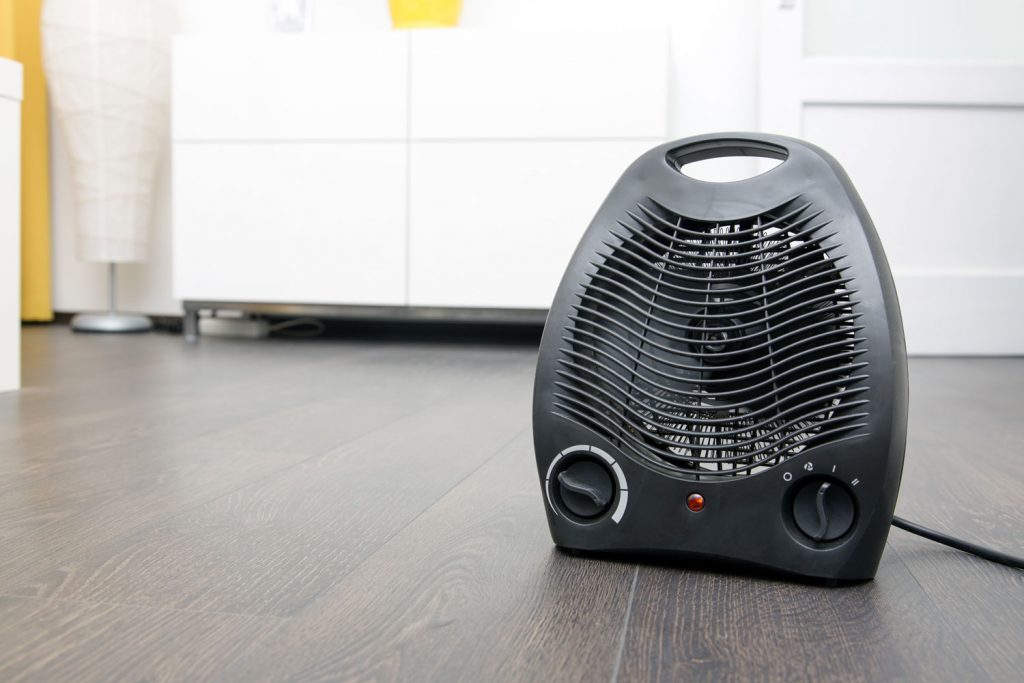
Fan heaters work by passing an electric current through metal coils. Then, the coils heat up. It transfers that heat to you with a fan.
As you can see, there's nothing in particular that can harm your health in this process.
Some users suggest that there could be a few concerns when using a fan heater. Since it uses a fan to disperse heat, it can potentially suck up contaminants like pet hair, air fresheners, and dust. Then, it can burn them—producing unexpected results.
The other concern would be electromagnetic pollution. However, this is only a real problem if you sleep right next to it. In general, maintain a safe distance and practice safe use.
Are Fan Heaters Or Ceramic Heaters Safe To Leave on All Night?
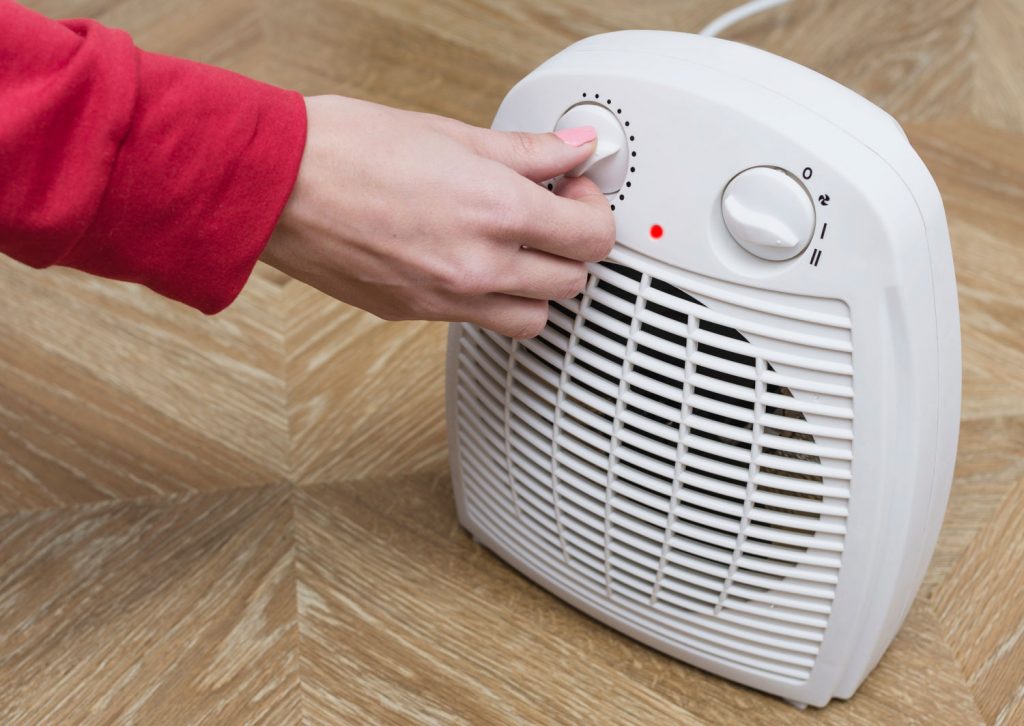
One of the benefits of using a fan heater is its simplicity. However, this benefit can also be a disadvantage. Since it's simple, most won't have the same safety features other heaters have.
For this reason, people would recommend you turn off a fan heater when you go to sleep. When you leave it on for too long, it can potentially overheat and start a fire.
Ceramic heaters are a different case. They have many safety features that make them more reliable than a standard fan heater. The unit itself won't overheat because it will shut itself off when it reaches extreme temperatures.
So, if you want to use a heater overnight, a ceramic heater would be the safer choice. Still, even with safety features, you never know what could happen. Most would still recommend you turn them off for the night.
If you must leave it on at night, make sure you follow the safety tips for using an electric heater.
Do Ceramic Heaters Emit Carbon Monoxide?
Carbon monoxide is an important concern when you use a heating appliance. So, some might wonder, do ceramic heaters emit carbon monoxide? Fortunately, ceramic heaters do not present this danger.
Only heaters that burn something have the potential to emit carbon monoxide. Additionally, those heaters can only produce it through incomplete combustion.
Final Takeaway
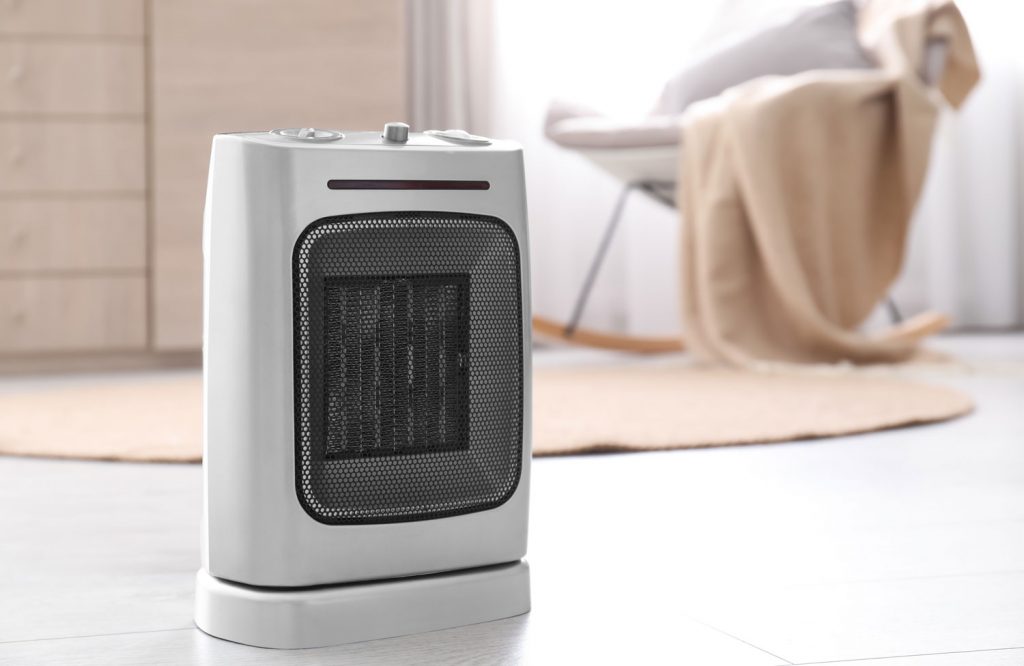
If you need a supplemental heating appliance, it can be difficult to choose because of the various options. As you can see, there are minimal differences between a ceramic heater and a fan heater. You can't go wrong with either.
However, since safety is usually the main concern, most would probably go for a ceramic heater. We hope you found the information above helpful!
Before you go, here are other articles you might want to check out:
Electric Heater Goes On And Off Repeatedly—Is Something Wrong?
Space Heater Making Crackling Or Clicking Noise—What Could Be Wrong?

Sir I am using a fan heater..does that produce carbon monoxide?
No. Carbon Monoxide is the result of incomplete combustion of a fuel like natural gas or wood.